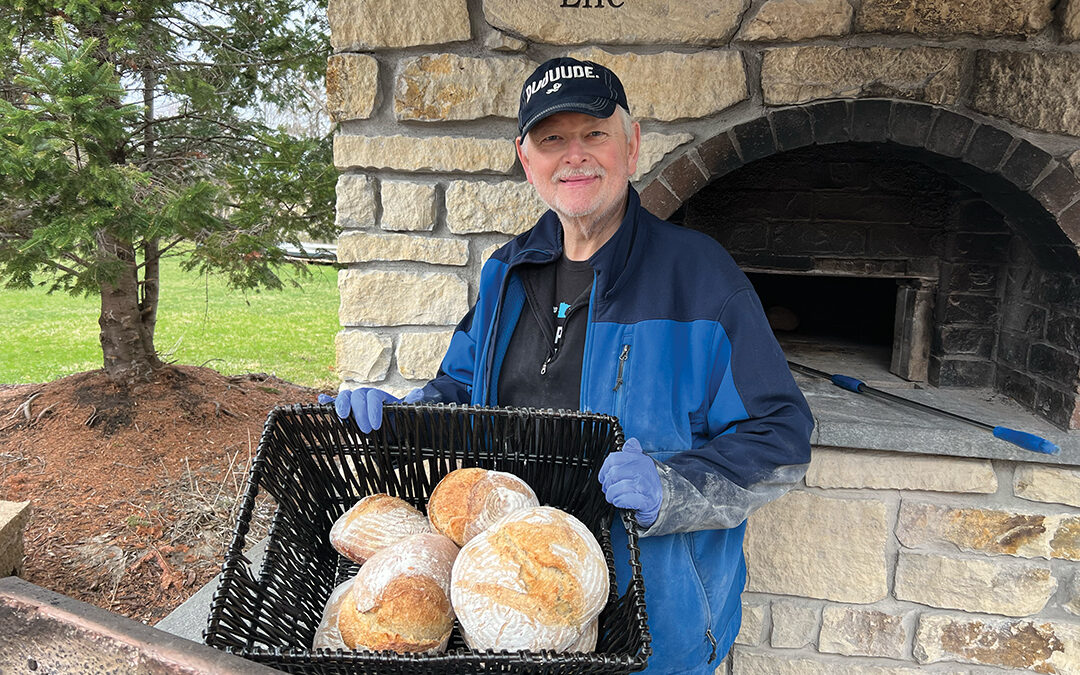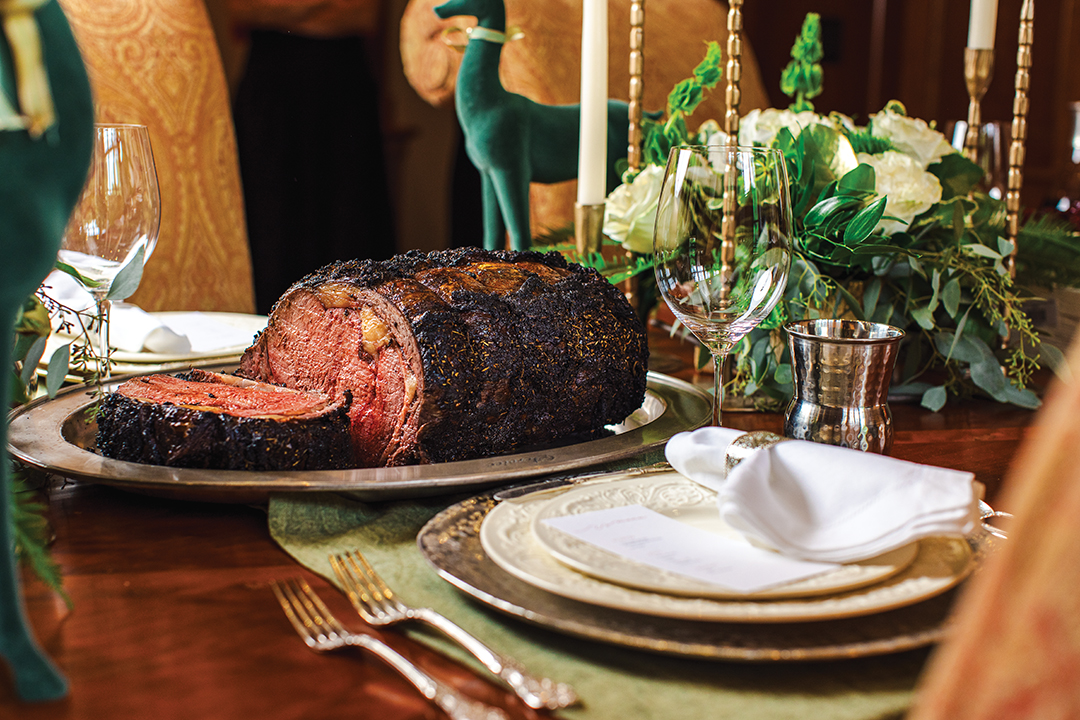
Photos: Michelle Bruhn
White Bear Lake local Michelle Bruhn shares her gardening expertise and local food journey on her Forks in the Dirt blog.
Growing up, Michelle Bruhn was in a family of green thumbs; gardening was second nature. Years later, after having her second child and making the decision to leave her full-time marketing job, Bruhn found time to return her attention to that old passion and the almost quarter-acre plot where she and her parents used to grow raspberry plants for a local nursery.
“I planted way too much that first year,” Bruhn says. “I had so many bags of frozen green beans. But it also forced me to figure out how to use these things in another way.” To store the surplus, Bruhn and her family experimented with canning dilly beans.
Finding solutions to home growing and food sourcing issues like this planted the seeds for a new project: figuring out where to store all these resources and discoveries. Soon, Bruhn’s blog, Forks in the Dirt, bloomed into a resource, including everything from articles about shopping local farmers markets and starting your own backyard vegetable garden, to finding ways to source food locally and responsibly.

“I’ve always been a writer, and I’ve always gardened. This was a way to share what I knew about gardening, share my passion for local food,” Bruhn says. It was also a reason to visit local farms she’d always wanted to see for herself. She says, “It was a way for me to get to know some of these farmers better, who I admired. And find out some tips and tricks for other people.”
As a culture, notes Bruhn, we’ve moved away from being close with our food and how it’s produced. Instead of eating seasonally, our grocery stores are often stocked through a supply chain that spans the globe. But aside from consuming a lot of energy, we often sacrifice taste during transit.
Starting to be more aware of where your food is coming from may seem daunting, but it doesn’t have to be. “One of the basic tenets I always talk about is kind of a two-tined approach: Grow your own and know your farmer,” Bruhn says. Most food travels more than 1,500 miles before it gets to the grocery store, Bruhn explains. “So, if you can grow a couple things that might take a lot of packaging or a long travel time, you can save a tremendous amount of energy.”
Bruhn uses garlic as an example. Most garlic is grown in China and travels 5,000 miles to reach our grocery stores. But growing it yourself has numerous benefits. “It’s going to taste amazing, it’s easy to grow and it keeps away bunnies,” Bruhn says. This makes garlic an excellent candidate for flowerbeds, too, a topic Bruhn covers in her edible landscaping class, one of many classes she teaches that has migrated onto an online format during the time of COVID.
Another easy starter that often arrives to us overpackaged is salad mix lettuces. “Lettuces are really easy to grow. You can start them on your windowsill in March and move them out in April, and you have fresh salad by late-April, May,” Bruhn says. “That, and herbs; those are the two starter things people usually get hooked on because having fresh herbs around is wonderful.” Plus, they don’t take up much space. Even if you don’t have a yard, you can grow them on a balcony or deck in pots.
When it comes to the second tine of Bruhn’s advice, getting to know your local farmers at a farmers market, Bruhn has some very un-Minnesotan advice. “Ask the farmers some questions, like, ‘How did you grow this?’ ‘Do you use organic methods?’ ‘When was this produce picked?’ It’s okay to ask those questions.”

An additional upside to asking these kinds of questions is that you’re starting to lay the groundwork for an ongoing relationship with farmers at your local market. “I strongly recommend people start those kinds of conversations because then the second time you come back, if you’ve had a conversation with that farmer, they will remember you,” she says.
Another way to connect with local farms is through a Community Supported Agriculture program, or CSA. “CSA is something that you sign up for in advance with the farmers. You’re signing up for a whole season’s worth of food ahead of time,” says Bruhn. “So, you say, I’m going to get a weekly box of food for these 12 weeks and I’m going to commit to paying you for that.”
Bruhn always updates her CSA blog by March. “If you don’t know where to start, you’re not sure you’re going to be able to make it out to a farmers market or whatever, one way to know you’re going to make a commitment to local food is to purchase that CSA,” says Bruhn.
Looking for other ways to get started growing or supporting local farmers? Visit forksinthedirt.com for everything from articles to resources to tasty recipes.
Starting Your First Vegetable Garden
Bruhn’s first piece of advice for getting started is the same as any realtors. “I always say it starts with location, location, location,” she says. “It depends on where your sun is; that’s always first.”
Another variable most people don’t consider is the path backyard wildlife like deer and squirrels take through their yard to get to a bird feeder or other point of interest. “Placement is really one of those things that you only get the chance to do once, and you figure out afterwards, ‘Oh, that’s why I shouldn’t have put it there,’” Bruhn says.
After you’ve considered all the variables you can come up with in regard to location, soil comes second. Cultivating the right soil in your own backyard can take a few seasons, so often it’s quicker to craft a simple raised soil bed.
“If you want to have some good success right away, go ahead and put down some cardboard to kill the grass on the bottom,” Bruhn says. “Then layer on some compost and soil, some good local soil, and mound it up so you can get about six inches deep; you’ll be able to plant in that right away.”






















